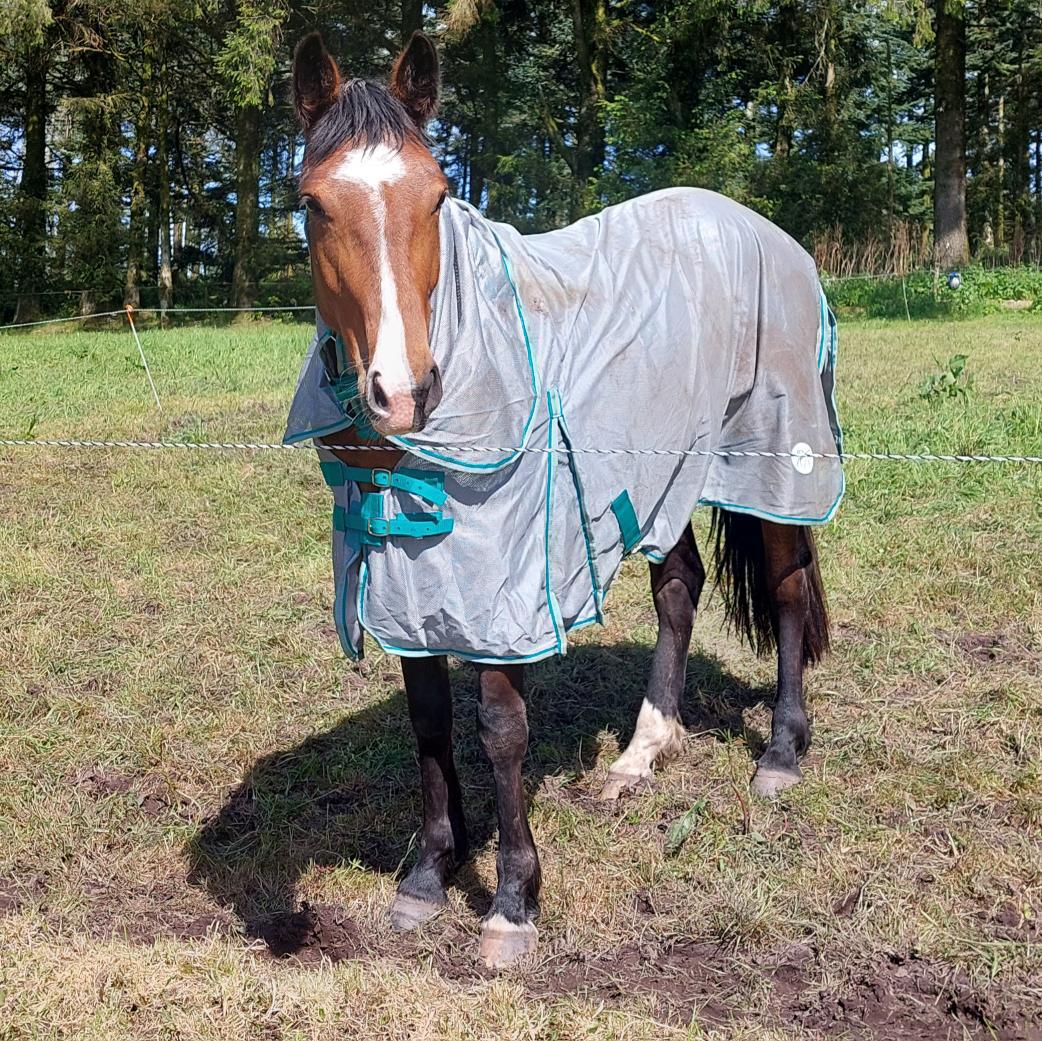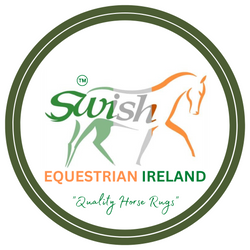If a swarm of unwelcome flying insects takes hold when your horse should be enjoying the sunshine and all the lush grass growth it provides, it can quickly go from joyful to gloomy. Fly infestations can affect our time spent in the saddle in addition to limiting your horse's turnout time. And even while you probably already have your own tried-and-true techniques for removing these bothersome pests from your yard, there's no harm in bolstering your collection of tools. Take a look at these helpful tips.
Protect vulnerable and exposed areas with protection
The face and ears of your horse are particularly sensitive to midge bites, therefore protecting these regions calls for careful consideration and frequently numerous forms of defence. The eyes, which flies are drawn to, are protected by a physical barrier, such as a fly mask that covers the ears and part of the face. The external parts of the ears and face, especially the muzzle, can be treated with topical repellents like Nettex Equine Summer Freedom. Avoid applying to the muzzle's sunburned parts.
Remember to take care of the delicate skin on your belly, elbows, and the area around your sheath. Regularly applying a repellent, such as Nettex Equine Fly Repellent Advanced or Nettex Equine Fly Repellent Standard, helps prevent flies from landing on delicate skin, which is frequently tougher to protect with rugs.
Carry out a 48-hour patch test.
However, you should still perform a patch test before using any new product, even though the majority of horses take the components in fly repellents rather well. This lessens the possibility that any product will cause your horse to have a broad unpleasant reaction. Apply the product to a small patch of skin and let it sit there for 48 hours to conduct a patch test. Then, before continuing to use, look for any kind of reaction.
routine horse washing
These smells can't help but draw flies, sweat, urine, and dung. Regularly washing your horse will get rid of these attractants, which can help keep him from being a fly magnet. Make sure to completely wipe off any stable stains from your horse after activity or on warm days. The perfect shampoo for keeping your horse clean and smelling good is Nettex Equine Everyday Conditioning Shampoo.
Feed a dependable garlic lick.
Garlic includes a natural sulphur ingredient that helps to repel black flies and the majority of small flying insects, keeping more than just vampires at bay. Fly infestations can be reduced by using a lick like Nettex Equine SUPAlyx Garlic.
Avoid grazing close to streams and rivers.
Avoid letting your horse graze near rivers, streams, and other moist or damp areas if at all feasible. Flies and midges are more prevalent in these areas because they tend to congregate near water sources. Horseflies and midges both lay their eggs in water and moist vegetation, making it the perfect habitat for these pesky insects. Your horse's exposure can be significantly decreased by removing them from these locations.
choose high ground wherever you can
Offering your horse a space that is dry and airy instead of moist and stagnant will help keep unwanted bugs away. High terrain is ideal for your horse and pony to avoid flies since it is typically more exposed than lower lying regions, which results in higher ventilation and movement. It is also less likely to be close to standing water, which makes it an overall less enticing environment for flies. Midges have very small wings, making it difficult for them to fly in gusts more than 7 mph.
Be extremely cautious at dawn and dusk.
Even though they can bite at any time, adult midges are most active in swarms at dawn and twilight. It is advisable to take extra measures during these periods, including wearing and securely fastening fly rugs or masks, withdrawing horses from places near water, and using repellents.
Put on a fly mask and rug.
Fly rugs and masks can be quite beneficial in regulating the comfort of horses that are particularly sensitive to fly and midge bites. Applying creams or sprays behind fly mats or masks requires caution. Horses frequently perspire while wearing rugs and masks in extremely hot weather, which could cause a response. To help prevent flies and midges from landing on the rug, spray fly repellent along the rug's outer edges. Rugs and masks offer an efficient physical barrier against flies when used properly. Select a rug with stripes, spots, or a bright white tone to further deter flies. Polarised light attracts flies, but because these rugs reflect it, flies are less drawn to it.
Maintaining clean, dust-free rugs and masks is another crucial consideration. If you find it difficult to handle, try to keep a spare fly rug and mask on hand to extend the time between washings and guarantee that your horse will always have a rug on laundry days.
Fly rugs should still be worn when your horse is out of pasture, if required, as well as in the field. Keep in mind that midges readily fly into stables (unlike horseflies, who don't enjoy shade).
Keep flies and midges out of the stables.
Your horse will attract midges and other flies into his stable, but there are precautions you can do to restrict their entry. To start, keep stables dry and clean by routinely removing urine and excrement to deter flies from congregating there.
The presence of good airflow through barns and stables, or even a fan if your horse can accept it, can aid to prevent flying visitation since flies typically favour regions with no natural airflow. Fly netting can also be placed on stable doors to restrict fly and midge ingress if your horse spends a lot of time outdoors socialising.
To reduce the fly population, you can also make use of natural defence mechanisms and predators. Swallows and house martins are useful to have around because they eat fly eggs and larvae, despite the fact that many people try to stop them from nesting in stables.


